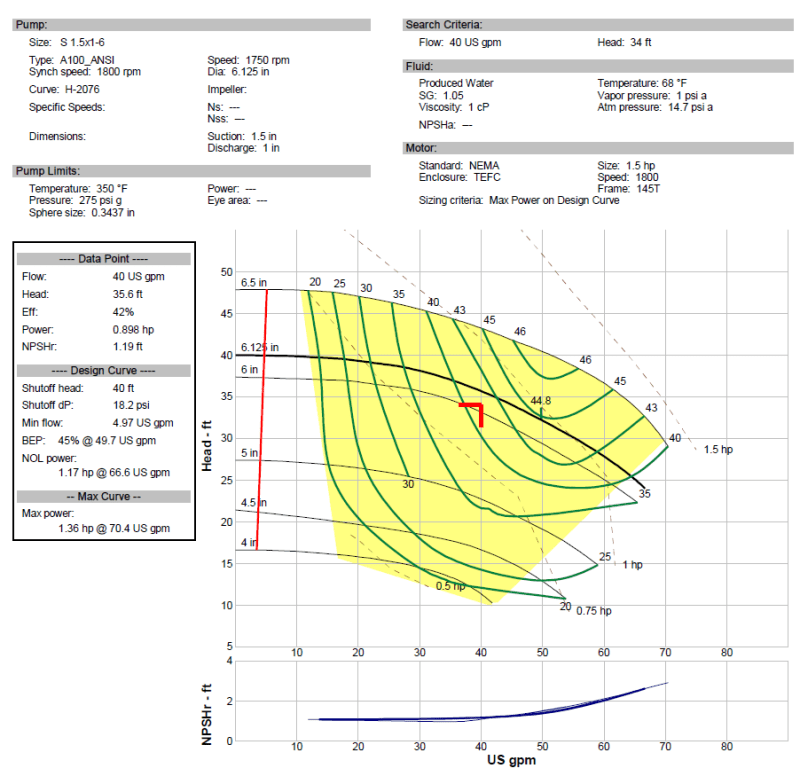Good afternoon all, I am having trouble explaining a cavitation issue where we apparently have adequate NPSHa for an existing triplex plunger pump moving produced water.
Pump:
Aplex 60M 1.500" plunger @ 314 RPM (Constant speed on/off)
Manufacturer provided NPSHr = ~ 15 ftWC at these conditions.
Problem is: the pump is audibly cavitating according to operations and the manufacturer's tables indicate ~22 gpm flow at the above conditions. We are seeing only 11.74 gpm (2.67 m3/hr), which may be explained by reduced capacity due to the cavitation. This pump is tank fed with a low level shutdown set @ 0.5m above the pump suction elevation so I am checking NPSHa to confirm we have the required suction head.
NPSHa = Hatm - Hvp + Hst - Hf + Hvel
Atm pressure:Vap Pressure: Velocity Head:
NPSHa = (29.8 - 0.67 + 1.64 - 0.35 + 0.004) ftWC
NPSHa = 30.4 ftWC
In this regard NPSHa >> NPSHr, what other explanations can explain the reported cavitation and loss of capacity? What am I missing?! My first inclination was to size a single stage centrifugal charge pump to increase NPSHa on the triplex suction but it seems I shouldn't have to? Thanks in advance for any advice.
Pump:
Aplex 60M 1.500" plunger @ 314 RPM (Constant speed on/off)
Manufacturer provided NPSHr = ~ 15 ftWC at these conditions.
Problem is: the pump is audibly cavitating according to operations and the manufacturer's tables indicate ~22 gpm flow at the above conditions. We are seeing only 11.74 gpm (2.67 m3/hr), which may be explained by reduced capacity due to the cavitation. This pump is tank fed with a low level shutdown set @ 0.5m above the pump suction elevation so I am checking NPSHa to confirm we have the required suction head.
NPSHa = Hatm - Hvp + Hst - Hf + Hvel
Atm pressure:
Hatm = 89 kPaa ~= 29.8 ftWC
Hvp 2.34 kPa ~= 0.78 ftWC (@ 20C, high to be conservative)
Hvel (2.67 m3/hr in 3" pipe) ~= 0.004 ftWC
Frictional Head Loss: Hf = 0.35 ftWC (calculated frictional losses from tank nozzle to pump suction at 2.67 m3/hr in 3"& 4" piping)
Static Head: Hst = 1.64 ftWC (minimum, usually operate at higher level)
NPSHa = (29.8 - 0.67 + 1.64 - 0.35 + 0.004) ftWC
NPSHa = 30.4 ftWC
In this regard NPSHa >> NPSHr, what other explanations can explain the reported cavitation and loss of capacity? What am I missing?! My first inclination was to size a single stage centrifugal charge pump to increase NPSHa on the triplex suction but it seems I shouldn't have to? Thanks in advance for any advice.

